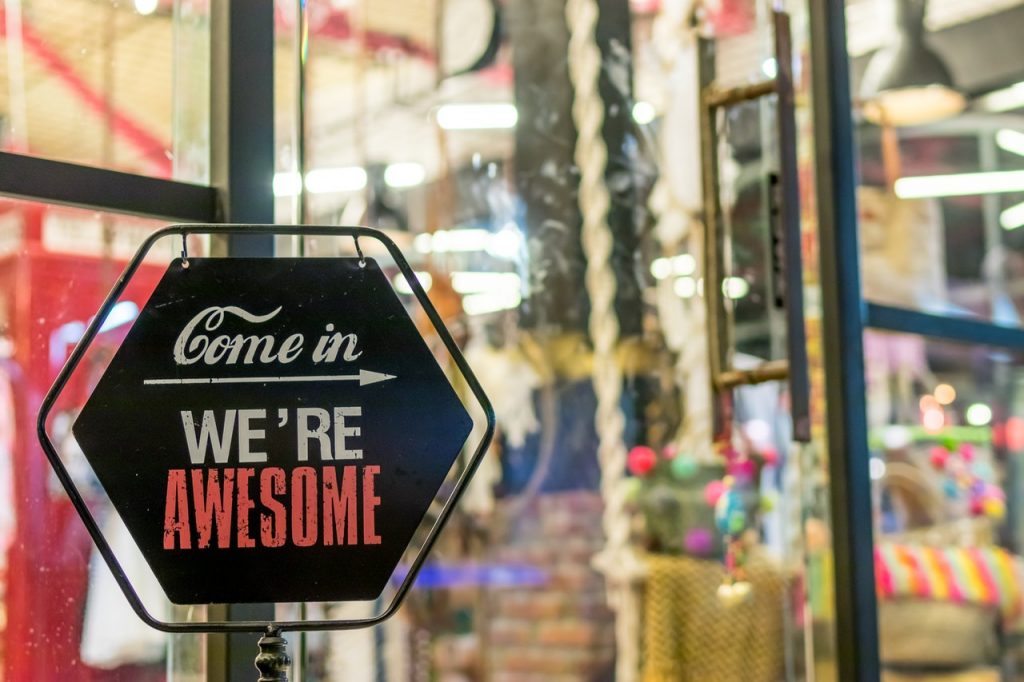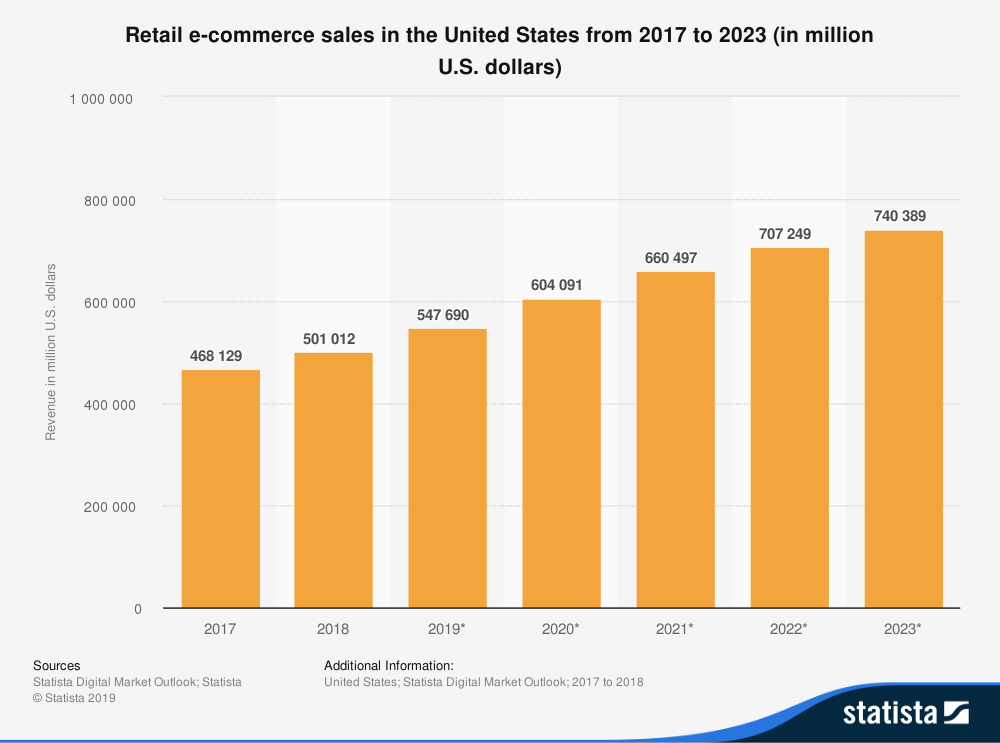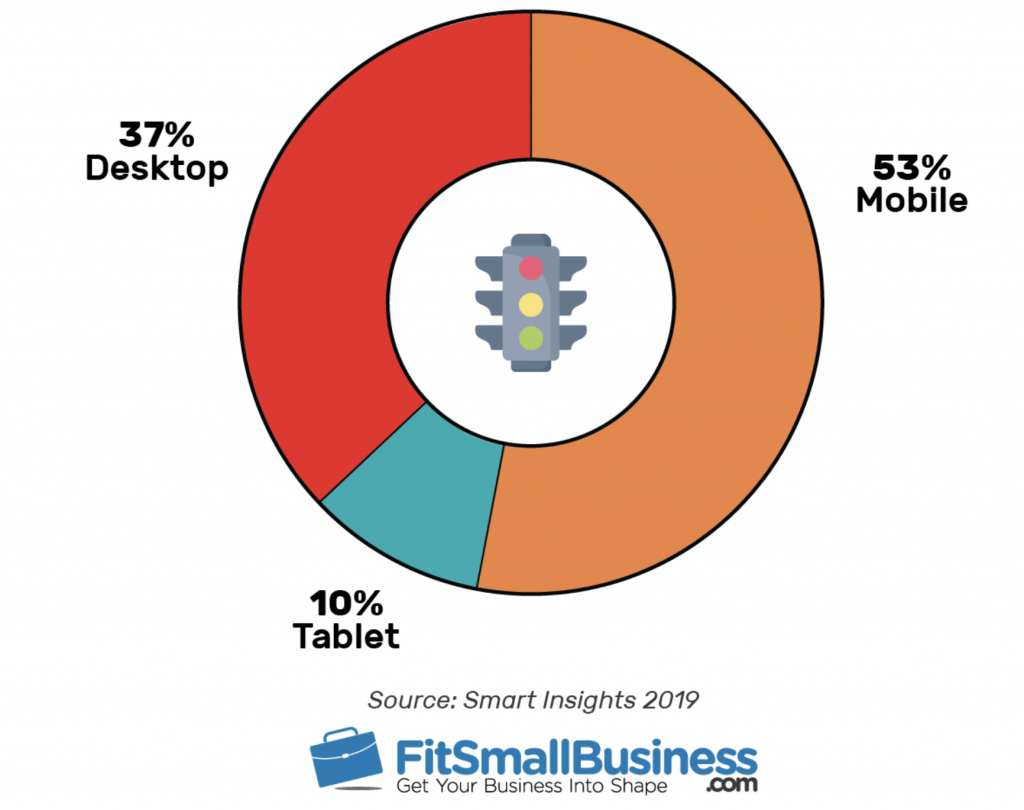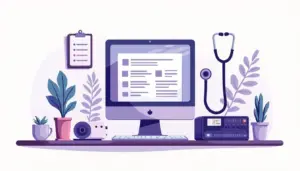How to Take Your Business from Brick-and-Mortar to Online
13 Apr 2020 By: Jessica Wise
Updated
“Incredible change happens in your life when you decide to take control of what you do have power over instead of craving control over what you don’t.”
― Steve Maraboli,
Speaker, Author, and Behavioral Science Expert

Small business owners have had the wind knocked out of them…by a COVID sledge hammer.
Just a few short weeks ago, millions of family-run shops and small businesses were suddenly forced to shut their doors.
Proprietors secured the locks with shaky hands, unsure of when they will be able to reopen or if their businesses will even survive the Coronavirus outbreak.
Understandably, many are feeling defeated, scared, and powerless.
But, now is not the time to lay down and give up.
One thing you can control is your power to adapt your operations to fit the current circumstances.
That doesn’t mean you have to completely abandon the old way of doing things either. What it means is adjusting your business plan, so your brand can thrive under even the most restrictive conditions.
Remember, “where there’s a will, there’s a way.”
Until life returns to normal, that “way” may mean moving your business from brick-and-mortar to online.
Here’s why an e-commerce website is guaranteed to help you stay afloat and the steps you need to take to get started.
Online is a Gold Mine
I’ll admit. Nothing can compare to the personal touch of chatting with your regulars or helping a new customer navigate your shelves to find the perfect item.
But, pandemic or no pandemic, by opening an online store, you can be there for your customers even when they can’t shop with you in-person.
Not only will an e-commerce website allow you to serve your patrons under almost any circumstances, but it is also set to become one of the most profitable retail models.
According to Statista research, by 2023, e-commerce will make up 22% of global retail sales and U.S. e-commerce revenue will total $740 billion. (BigCommerce)

In addition, by taking your brand online, you will expose your products and services to millions of potential customers.
And, trust me. There’s no shortage of web-based window shoppers. Over 75% of people are shopping online at least once a month. (BigCommerce)
Over 75% of people are shopping online at least once a month. @BigCommerce Share on XThere’s plenty of people out there that are just waiting to discover your business. So, let’s get started!
Create a Social Media Presence
If you will be taking your business from brick-and-mortar to online, one of the first things you should do (if you haven’t already) is create social media accounts for your business.
Why? Because, 43% of global shoppers begin their journey by researching products online via social networks (Statista), and 84% of US online shoppers review at least one social media site before making a purchase. (smallbiztrends)
43% of global shoppers begin their journey by researching products online via social networks. @Statista Share on XMost importantly, stores with a social media presence have on average 32% more sales than stores without one. (BigCommerce)
It might seem overwhelming to run multiple accounts, but don’t worry. Depending on your business, you won’t need to create a profile for every single social media platform.
For example, LinkedIn is great if your business provides professional services or sells products to other businesses. While Instagram is an appropriate platform if you have tons of intriguing images to share with your audience.
However, every business should have a Facebook page. It is the world’s most popular and widely used social media platform.
The video below will walk you through creating a business Facebook page.
Make Sure Your Website is Mobile Friendly
Whether you already have a website or not, if you’re planning to sell online, you have to ensure that your website has a responsive design.
A responsive design will automatically optimize your website, so it is properly viewable from any device, including tablets and smartphones.
A whopping 53% of shoppers browse from a mobile device (fitsmallbusiness).

That’s a huge chunk of web traffic and potential business that you won’t want to miss out on.
Better yet, predicted growth in mobile shopping vs. physical and computer desktop shopping is enormous. By 2021, mobile is expected to dominate the market by driving 54% of all retail sales. (BigCommerce)
By 2021, mobile is expected to dominate the market by driving 54% of all retail sales. @BigCommerce Share on XIn addition, a responsive design will make the purchase process more pleasant and convenient for your customers. And, you can never go wrong by making things easier for buyers.
It’s not too difficult to get started either. If you don’t already have a website, there are tons of great website building platforms out there (like Wix and Squarespace) that offer responsive design templates.
Or, if you have an existing website that needs to be converted into a responsive e-commerce website, a professional web and mobile development services team can get the job done for you in no time.
Think of UX in the Transition from Brick-and-Mortar to Online
If you’re going to take your business from brick-and-mortar to online, you have to keep the users’ experience (UX) in mind.
Since shoppers won’t be able to see your products or service in-person, including thorough details and descriptions on your product pages is extremely important.
In fact, 88% of customers think detailed product pages are crucial for making a purchase decision. (Forbes)
88% of customers think detailed product pages are crucial for making a purchase decision. @Forbes Share on XYour website should also be easy to understand and navigate.
According to the National Retail Federation, consumers are interested in technologies that show whether a product is in stock (55%), help them compare prices or read reviews (49%), and make it easier to find a product or its location (47%).
Furthermore, you’re going to want to make sure that your website loads quickly.
If a page’s load speed is delayed by even 1 second it can reduce conversions by 7% (Skilled).
Below expert Mark Laxton of WPOptimiser.com discusses 6 possible causes and solutions for a slow loading website.
Consider Implementing 24/7 Live Chat Service Agents
When you’re running a small business, it’s virtually impossible to be there for your customers 24/7.
But, once you take your business online, it’s not only possible…it’s a breeze!
And, no. You don’t have to hire more staff.
24/7 live chat service teams are not only a little known secret and a godsend, but they are also up to 50x cheaper than hiring a full-time employee.
Chat service agents will learn the ins and outs of your business, process orders, and answer customers’ questions around the clock.
69% of consumers say not being able to reach a human being is the biggest post-sale customer service mistake retailers make. (Retail TouchPoints)
69% of consumers say not being able to reach a human being is the biggest post-sale customer service mistake retailers make. @RTouchPoints Share on XSo, offering small business tools like this on your e-commerce site will be a crowd-pleasing game changer.
Plus, right now, because of the pandemic, some companies are now offering their live chat agent services for free!
Make Returns Easy
When you take your business from brick-and-mortar to online, make sure you have a solid plan for processing and accepting returns.
The hassle of returning merchandise is one of online shoppers’ biggest pet peeves.
Kudos to companies who make online returns easy. As for companies that make them a pain in the ass… AHEM @davidsbridal
— Cate Dashwood (@catedashwood) January 26, 2017
73% of surveyed consumers said the returns experience affected whether they would continue shopping with a retailer. (UPS)
So, make the process simple and straightforward by posting clear instructions and guidelines on your website and at a checkout.
You’ll score even more points with shoppers if you offer this service at no charge.
39% of online shoppers expect free returns. (fitsmallbusiness)
Utilize Video to Create an Experience
There’s no doubt that your customers will miss walking into your store and seeing your merchandise in person.
They will miss the colors, sounds, and smells that go along with being there in-person.
It’s a natural instinct for shoppers to want to see what they’re buying.
In fact, 92% of shoppers say visuals influence their buying decision the most. (Hosting Facts)
92% of shoppers say visuals influence their buying decision the most. @hostfacts Share on XSo, why not upload videos of your products and services to your website?
Check out this virtual tour of Michigan Toy Soldier’s retail store. This a perfect example of a brick-and-mortar to online experience being used to connect with customers via the internet.
Shoppers will love being able to get a better look at your offerings before they take the plunge.
Plus, 4x as many consumers prefer to view a video about a product than reading about it (Animoto)
The Bottom Line
There’s a slim chance that taking your business online will hurt your bottom line.
If anything, an e-commerce website is going to increase your revenue and expose your brand to endless amounts of new potential customers.
The flexibility of having an additional avenue to sell your products and services will help your business to survive in even the harshest of circumstances.


